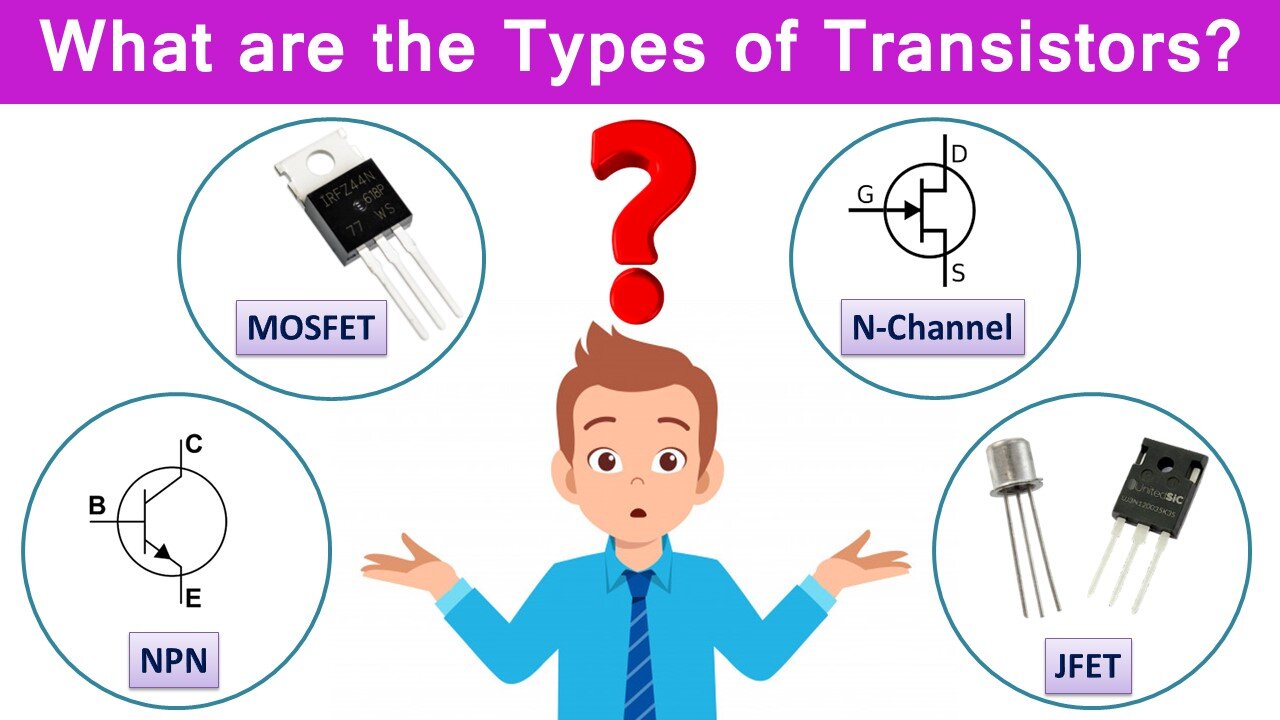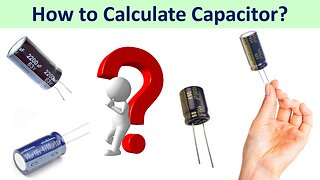Premium Only Content

What are the Types of Transistors?
At the beginning of the 20th century, when computers began to be produced, they were gigantic. Today, however, there has been the discovery of transistors that make them small enough to take them on our knees and fit them in our palms with phones or tablets. In addition, thanks to transistors, processors that offer much faster operation have been developed. A transistor is an electronic circuit element that regulates current or voltage flow and acts as a switch or amplifier for electronic signals. It was invented in 1947 and quickly replaced the vacuum tube as an electronic signal conditioner. It consists of a layer of doped semiconductor materials such as silicon and germanium, each of which can carry a current. The subject of this video is not the structure and history of transistors, but after a small introduction about transistors, we can move on to our main topic.
You may know or have heard of transistors such as BJT, MOSFET, JFET, NPN, N-Channel and many more. But you may have trouble distinguishing them. If so, this lesson is for you. At the end of this video, we will basically learn that all three pins circuit elements are not transistors, how transistors are classified and how we can distinguish them.
Transistors are classified into two groups, BJT and FET. These expressions come from abbreviations formed from the initials of their English names. BJT comes from the acronym Bipolar Junction Transistor while FET comes from the abbreviation Field Effect Transistor. The task of both transistors is to provide current control or voltage amplification as a switch. If we talk briefly about the differences between them, BJTs control current and current, while FETs control voltage and current. BJTs are quickly affected by temperature, while FETs are less affected by temperature. As such, BJTs degrade quickly, while FETs are more durable and long-lasting. Therefore, BJTs are generally preferred in low-current hobby electronic applications, while FETs are mostly preferred in low-voltage commercial applications. Also, BJTs have a low switching speed, while FETs have a high switching speed.
-
 5:24
5:24
Electrical Electronics Applications
2 years ago $0.02 earnedHow to Calculate Capacitance and Voltage Value of Capacitor?
189 -
 2:22:52
2:22:52
Steven Crowder
6 hours agoDonald Vs. Ilhan: Trump Boots Somalis and The Meltdown is Glorious
463K339 -
 1:04:37
1:04:37
Sean Unpaved
5 hours agoIs Lane Kiffin Staying At Ole Miss Or LEAVING For LSU? | UNPAVED
19.5K -
 29:48
29:48
The White House
5 hours agoPresident Trump and The First Lady Participate in the Thanksgiving Turkey Pardoning
37.4K24 -
 1:58:04
1:58:04
The Charlie Kirk Show
4 hours agoMark Kelly Court Martial + AI Embargo + Thanksgiving | Davis, Federer, Newcombe | 11.25.2025
74.7K21 -
 53:20
53:20
The Rubin Report
5 hours agoLara Trump Destroys Bill Maher’s Narrative w/ Facts in 1 Minute
54.5K61 -
 56:32
56:32
TheAlecLaceShow
3 hours agoGuest: Rep. Tim Burchett | Ukraine Russia Peace Deal | Trump SLAMS Seditious 6 | The Alec Lace Show
23.2K1 -
 LIVE
LIVE
LFA TV
17 hours agoLIVE & BREAKING NEWS! | TUESDAY 11/25/25
1,536 watching -
 1:08:44
1:08:44
VINCE
7 hours agoThe Deep State Strikes Back! (Guest Host Shawn Farash) | Episode 176 - 11/25/25 VINCE
239K174 -
 2:14:00
2:14:00
Benny Johnson
6 hours agoIt's All True, The 2024 Election Was Ready To Be Rigged. The REAL Story of How Trump-Elon STOPPED It
83.9K110